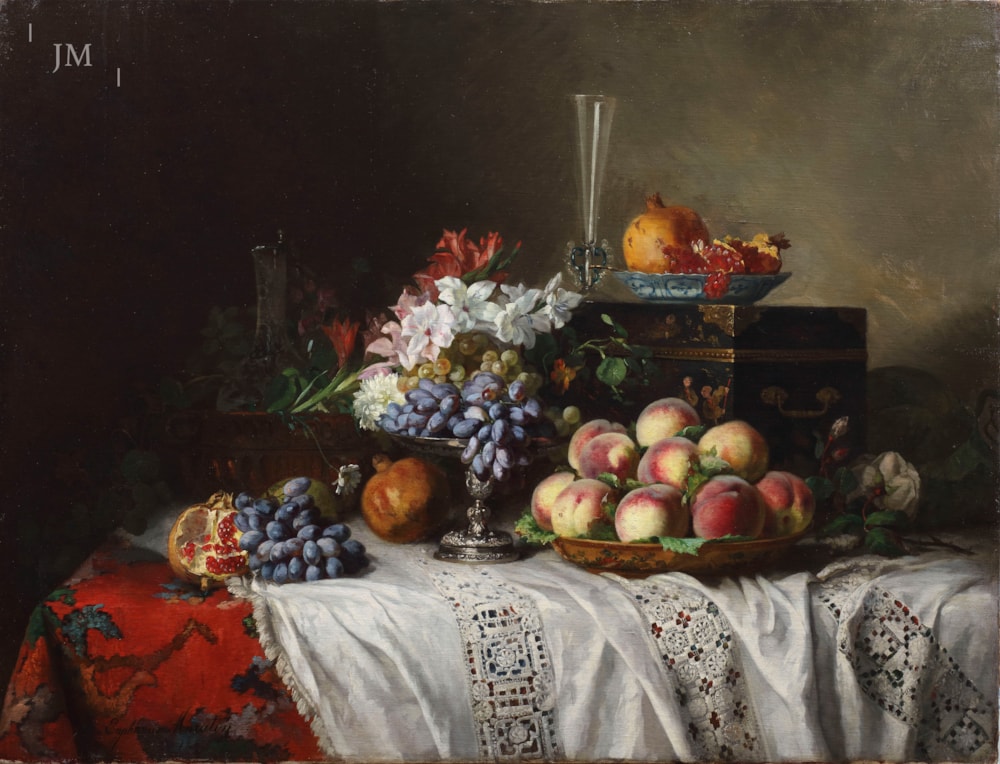Euphémie MURATON ( BEAUGENCY 1840 - BEAUGENCY 1914 )
Still life with peaches, pomegranates, grapes, gladioli and a jewel casket

Still life with peaches, pomegranates, grapes, gladioli and a jewel casket
oil on canvas
35 x 45¾ in. (89 x 116.5 cm.)
signed and dated 1868
item sold
Exhibited: Paris, Palais des Champs-Elysées, Salon, 1868, no. 1845, Pêches, raisins et glaïeuls sur une table
The opportunities for women to become professional artists in nineteenth century France were restricted. Up until 1897 when women were granted access to the free training at the state sponsored École des Beaux-Arts., the only option was to seek instruction from established artists in private studios where the curriculum offered a diluted form of that taught in the academies. It was often prohibitively expensive. Study of the human form from nude models, so central to the French academic system and to a successful career in history painting, was denied to women in both public and private institutions through much of the century. The nude model was deemed inappropriate and, as a result, female artists focused instead on genre, landscape and still life painting. Although an ability in drawing and watercolour was indeed considered part of a good formation, formal careers for women remained elusive. Those few who did enjoy acclaim in this period were generally helped by a close male connection in the art world. Rosa Bonheur, for example, was taught by her father, while Berthe Morisot’s husband, Eugène Manet (Edouard’s brother) was exceptionally supportive of her work. Euphémie Muraton was no different; she married and trained under Alphonse Muraton (1824-1911), a painter from Tours who specialised in religious scenes and portraiture. Euphémie became a successful and prolific painter and exhibited at the Salon nearly every year from 1864 to 1911. She took part in exhibitions in Moscow and St Petersburg as well as winning medals in 1880 and at the Exposition Universelle in 1889. She became a member of the Société des Artistes Français in 1888.
With its abundant fruits and opulent setting, this still life is both a homage to the realism of the Dutch seventeenth-century artists and an archetypal ‘Second Empire’ painting. Whilst the painterly style is reminiscent of pictures by Antoine Vollon, Germain Ribot and Francois Bonvin, the tapestry under the lace and the gladioli laid above the goblet of grapes add a wealth of colours in contrast to the more sombre and seventeenth-century Spanish palettes of the former painters.

